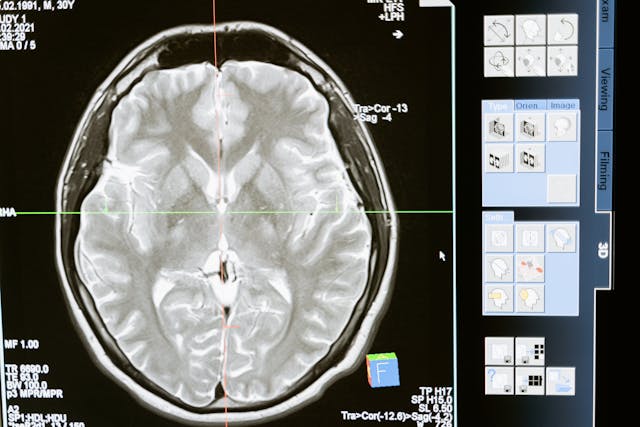
What causes an epileptic seizure? It is caused by abnormal electrical activity in the brain.
There is not one reason why people have epilepsy and there is not one type of epileptic seizure. Epileptics can suffer from focal seizures and generalized seizures. As their names suggest, focal seizures are focused on one hemisphere of the brain and generalized seizures take up both halves of the brain. There are six types of generalized seizures’ tonic-clonic, tonic, clonic, myoclonic, absence, and atonic.
Tonic seizures make all of the muscles contract constantly and the person may go blue because the chest muscles and diaphragm are contracted as well. Clonic seizures make the limbs shake. Tonic-clonic seizures have a mix of the two all of the muscles in the body will contract, then extend, and then shake. This is also called a grand mal seizure. Myoclonic seizures have very short muscle spasms that are not always in every muscle. Absence seizures don’t affect the muscles, only the brain. The person appears to be absent for a while, then comes back. The person might blink very rapidly as well. These are called petit mal seizures. Atonic seizures cause lack of muscle activity. They are also called drop attacks because the person may collapse. People who undergo generalized seizures lose consciousness and are very tired when they regain consciousness.
What happens in the brain during a seizure? Generalized seizures are caused by multiple neurons in the brain firing in sequence. Everything that we do starts and stops in the brain. If I want to lift the coffee cup off the desk to have a drink of the, now, cold coffee, there are several steps. My eyes have to see the cup and my brain analyze it. My brain has to want the coffee. My brain has to send the signal to my arm to reach the cup and then my fingers to grip it, and then contract the muscles to bring it to my mouth. My brain has to shape my mouth and then make me swallow. All of those processes rely on the neurons in my brain. I have approximately 86 billion neurons, and there are neurons that are responsible for sensory information and neurons that are responsible for muscle function. Individual neurons can only work as a network and they have to receive and transmit information to each other. They do this in the form of electrical stimulation. Each neuron has dendrites, which receive electrical signals from other neurons and axons, which transmit the neuron’s own electrical signals.
Neurons only fire when they are triggered, and they fire in order. When they receive an electrical signal, they transmit an electrical signal. Different neurons might be firing at the same time to do different tasks, but the neurons responsible for one task will only be firing in order as they send signals across the brain. When a generalized seizure strikes, the neurons in one part of the brain start to fire at the same time, in a synchronized form. This starts a wave that travels across the brain. When neurons fire, they have to recharge themselves and there is a short time when they cannot fire again. When the wave travels across the brain, it prevents the neurons from taking this short break and makes them fire repeatedly. The whole brain starts to fire excessively and signals are sent to all of the muscles to contract, causing the symptoms of the seizure that we know. After a few seconds, or a few minutes depending on the severity, the firing stops and the brain returns to normal. The person will have lost consciousness because the normal processing of the brain will have stopped. The person will also be tired because the brain will have used far more than its usual energy requirement and all of the muscles will have been contracted.
Nobody really knows what makes the first group of neurons start to fire synchronously. They are not completely sure what causes the wave that travels across the brain as well. Seizures can be suppressed by anticonvulsant medication Some of these work by blocking sodium channels in the brain, which stops the neurons in the brain firing repetitively, preventing seizures, in theory. Epilepsy can be diagnosed with an EEG test and suitable drugs prescribed. Many people have to take them for the rest of their lives. And this is what I learned today.
Photo by MART PRODUCTION: https://www.pexels.com/photo/technology-computer-head-health-7089020/
Sources
https://www.epsyhealth.com/seizure-epilepsy-blog/what-happens-to-the-brain-during-a-seizure
https://www.mayoclinic.org/diseases-conditions/epilepsy/symptoms-causes/syc-20350093
https://www.nhs.uk/conditions/epilepsy/
https://en.wikipedia.org/wiki/Epilepsy
https://en.wikipedia.org/wiki/Carbamazepine
https://en.wikipedia.org/wiki/Seizure
https://www.ncbi.nlm.nih.gov/pmc/articles/PMC6387313/
https://www.drugs.com/tegretol.html
https://www.etymonline.com/word/epilepsy
https://hms.harvard.edu/news/new-field-neuroscience-aims-map-connections-brain
